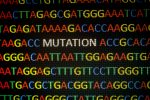Study Encourages Genetic Testing for Pregnant Women Who May Have EDS

A study recommends genetic testing if a pregnant woman is suspected of having Ehlers-Danlos syndrome (EDS), especially vascular EDS because this disease type carries an increased risk of uterine rupture during childbirth.
The case study, “Twin Pregnancy with Untyped Ehlers-Danlos Syndrome Requiring Prompt Genetic Testing: A Case Report,” was published in the journal Case Reports in Women’s Health.
EDS is a group of genetic disorders affecting connective tissues, which provide structure to joints, skin, blood vessels, and other tissues and organs.
Among the various types of EDS, the most common is hypermobile EDS (hEDS), which is characterized by soft, smooth, and fragile skin, hypermobile joints, and frequent joint dislocations. Vascular EDS (vEDS) involves translucent skin that is easily bruised, and fragile arteries, muscles, and internal organs.
In most cases of hEDS, the genetic mutations have not been identified. In vEDS, the mutation often occurs in the COL3A1 gene, which codes for collagen type III. Collagen is an important component of connective tissue.
Pregnancy in women with vEDS is associated with possible serious complications, including blood vessel and uterine ruptures.
“Total maternal mortality in pregnancy with vEDS is estimated to be 5%–6%,” the researchers wrote.
In their case report, these investigators in Japan reported a case of a 20-year-old, pregnant with twins, for whom vEDS could not be ruled out based on her family medical history.
She was brought in at 19 weeks of gestation with suspected EDS. The patient had a history of multiple joint dislocations throughout childhood and displayed skin hyperextensibility — extra stretchy skin.
Her mother had died of sudden cardiovascular rupture at age 47 during a cardiac procedure. An autopsy revealed suspected EDS of unknown type. The case made doctors suspect vEDS in the patient.
“Her uterus was already markedly distended, so it was necessary to rule out vEDS reliably and rapidly,” the investigators wrote.
Twin pregnancies with vEDS carries an increased risk of uterine rupture, so the woman underwent genetic testing and counseling.
Her maternal aunt had been diagnosed with hEDS based on recurrent joint dislocation and joint hypermobility. However, the investigators noted that the mother’s history of cardiovascular rupture was difficult to explain with hEDS.
Multiple genes associated with connective tissue disease were sequenced from the patient. However, no known disease-causing mutations were detected. As a result, the patient was ultimately diagnosed with hEDS based on clinical criteria.
She was placed on bed rest from 29 weeks of gestation due to worsening hip pain. Her hip pain subsequently eased, but her back and pelvic pain gradually increased. As her pregnancy advanced, bed rest became more difficult.
At 34 weeks, an elective cesarean section (C-section) was performed. Both babies were healthy at birth, but were suspected of having joint hypermobility. They were followed up by a pediatrician.
After delivery, the woman’s joint pain decreased. However, she developed postpartum depression and was referred to psychiatry.
“In contrast to vEDS, hEDS is less likely to be a direct cause of maternal death, but it often leads to … a tendency to anxiety and depression during pregnancy and throughout the postpartum period,” the researchers wrote.
“Since precautions in perinatal management vary depending on the type of EDS, it is important to provide genetic counselling and confirm a diagnosis, especially when vEDS is suspected,” they concluded.








